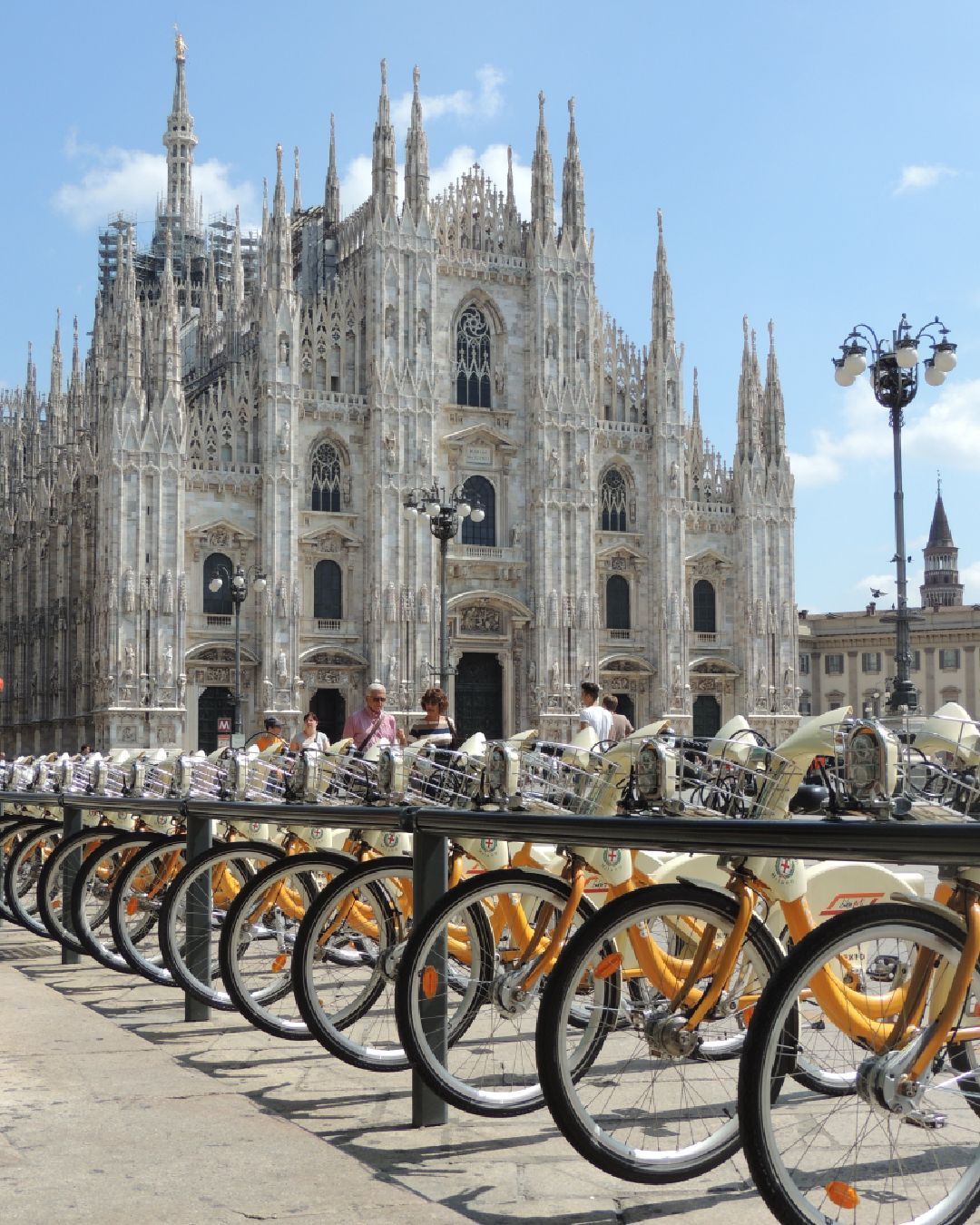
Is biking in Milan too dangerous? Debate on cyclists' safety is increasingly heated
As of 2019, the number of people biking in Milan has increased significantly. If so many citizens move around the Lombard capital on two wheels, it is because the city centre is almost all flat and not particularly large. In recent months, however, the debate about the safety of people cycling in the city has intensified, particularly after a number of fatal accidents in a short period of time. Despite an increase in the number of regular cyclists in the city and events by cyclists' associations, the municipality still seems to have failed to adapt its initiatives and urban policies to this change of pace, with all the risks for the safety of cyclists. In April, a 39-year-old woman was run over by a heavy goods vehicle while cycling at an intersection a few hundred metres from the Duomo. This is the third person in the space of a few months to lose their life in an accident with a heavy goods vehicle while cycling. This is also why cyclists' associations have long argued that the municipal administration is not doing enough to prevent further accidents of this kind. In the first eight months of 2022, there were more than 1,200 road accidents in Milan, mainly involving bicycles and electric scooters. In this ranking, Milan is by far the first city, and overtakes Rome - in second place - by more than 600 accidents.
For decades, Milan has been a city designed almost exclusively for cars. Here, one car is registered for every two inhabitants, an average significantly higher than in any other European metropolis - as late as 2012, Copenhagen had just over 20 per 100 inhabitants. From 1993 to 2011, when the capital of Lombardy was governed by centre-right administrations, there were almost no city regulations for those who travelled by bicycle. In the last ten years, however, the situation has improved somewhat, thanks to some targeted measures promoted by centre-left administrations. In the early months of the health emergency, the Milan City Council governed by Beppe Sala promoted a plan to build dozens of new stretches of cycle paths. Despite the fact that there are now four times as many cycle paths in the city as there were fifteen years ago, and that the municipal bike sharing service, BikeMi, is the largest and best equipped in Italy, Milan has only slightly more than two kilometres of cycle paths for every 10,000 inhabitants. A figure that is lower than the average for Italian capitals, which is 2.8 kilometres, and much lower than many other European centres from which the capital is somehow inspired, in terms of its model of development and social coexistence - Stockholm, for example, has more than nine, Lyon at least five, and Vienna 4,5.
Milano, via Galvani. Proteggimi! Una pista ciclabile umana dedicata ai ciclisti di Milano (video andrea cherchi) pic.twitter.com/7RRjVFFb3K
— andrea cherchi (@cherchiandrea) January 24, 2023
The concern of cyclists' associations - united under the acronym 'ProteggiMi' - is that the municipality, in order to avoid taking unpopular measures against those who travel by car, namely the majority of the population, does not intervene on the habits and behaviour of drivers - such as double-parking or on cycle paths - that make the city much more dangerous for those who travel by bicycle. This is why on one of the most used cycle paths - the one on Viale Monza, which connects the centre with some of its most populated neighbourhoods - the so-called 'human cycle lane' was organised, and repeatedly reproposed in other parts of the city, where numerous people protected the cycle lane with their bodies from the carriageway. «We are here to ask the Milan municipality to enforce respect for the cycle lane [...], which is also used by cars, which park on it with impunity, forcing us to run a danger,» an activist from the 'Sai che puoi' association, which among other things fights for «to have a city with fewer cars, and that go slower,» told MilanoToday. Cars parked on the cycle lane are a danger because they force cyclists to make sudden detours, encroaching into the lane designated for motor vehicles, thus creating possible accidents. In 2021, more than 800 people were run over by bicycles in Milan - in 2019 just over 700. Of the 118 interventions in accidents involving two-wheeled vehicles, more than 50% involved bicycles, and in 2021 more than twice as many cyclists were transported to hospital in code red than in 2019. This is also why the city council recently approved an agenda calling on the mayor to institute a 30 km/h speed limit throughout the city by 2024, to protect cyclists and pedestrians.














































